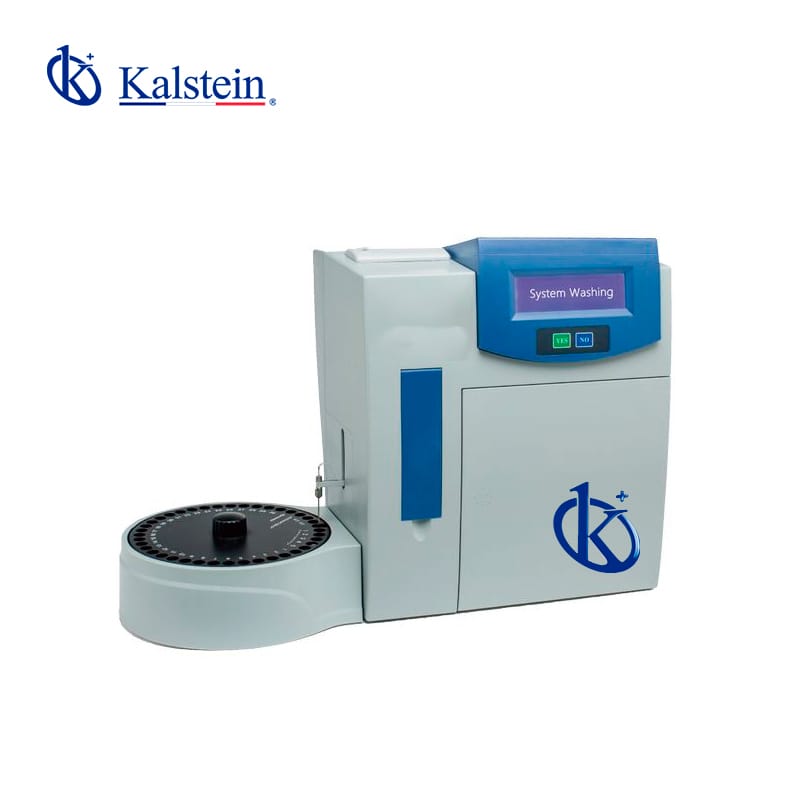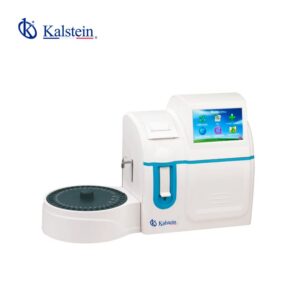Description
The Electrolyte Analyzer YR06396// YR06406 stands as a vital instrument in any clinical laboratory setting. Designed for optimal performance, it is equipped with an advanced automatic software system that monitors and corrects electrical potentials. The device efficiently detects and filters small bubbles to prevent blockages, ensuring accurate measurements. Its real-time system diagnostics and automatic detection of residual liquids with alarms increase operational safety. With features like automatic calibration and two-point correction for superior precision, this analyzer minimizes risks of obstructions and cross-contamination through its tailored washing methods. Its substantial storage capacity of up to 10,000 results and minimal energy consumption help reduce operating costs, establishing it as an essential component in medical diagnostics.
Market Price
The market price for the Electrolyte Analyzer varies from $2,000 to $10,000 USD, depending on the chosen model and its specific functionalities. Prices can fluctuate based on the supplier and additional configurations required. It is recommended to request a personalized quote to ensure you receive the best deal tailored to your needs.
Frequently Asked Questions
- What samples can be analyzed with the Electrolyte Analyzer?
- The analyzer processes serum, plasma, whole blood, and diluted urine.
- How fast are the measurements?
- Each measurement is completed within ≤30 seconds.
- What maintenance does the device require?
- Routine maintenance involves cleaning electrodes and replacing calibration and cleaning solutions.
Advantages and Disadvantages
Advantages:
- Automatic calibration with two-point correction ensures high precision.
- Real-time diagnostics with alarms for enhanced safety.
- Stores up to 10,000 test results.
- Specialized washing methods minimize obstructions and contamination.
- Energy-efficient, lowering operational expenses.
Disadvantages:
- Requires ongoing maintenance for optimal operation.
- Initial purchase cost may be substantial depending on the model.
Field Use of the Product
The Electrolyte Analyzer is indispensable in medical and clinical laboratories for measuring and analyzing electrolyte levels in biological samples. Its swift and precise results are crucial for diagnosing and monitoring conditions like kidney issues, dehydration, and metabolic disorders. Especially in emergencies, its rapid response time makes a significant difference in patient outcomes.
Recommendations
For optimal performance of the Electrolyte Analyzer, regular calibration and proper cleaning are recommended. Follow the manufacturer’s guidelines for maintenance and solution replacement. Storing the device in proper temperature and humidity settings will extend its lifespan and enhance accuracy. Enhance your laboratory’s efficiency by integrating the Electrolyte Analyzer. To discover more or generate an automatic quote, visit our Kalstein Plus platform and take the step towards equipping your lab with cutting-edge electrolyte analysis technology!
Specifications
| Model | YR06396 | YR06397 | YR06398 | YR06399 | YR06400 |
| Sample | serum, plasma, whole blood and dilute urine | ||||
| Analysis Method | ion selective electrode(ISE) | ||||
| Measuring time | ≤30s | ||||
| Sample position | 39 positions (including 5 emergency and 4 functional positions) | ||||
| Storage | up to 10000 test results | ||||
| Printer | Internal thermal printer | ||||
| Interface | RS232 port | ||||
| Temperature | 10-30°C | ||||
| Relative Humidity | 80% | ||||
| Atmospheric pressure | 86~106 kPa | ||||
| Power supply | AC220V±22V, 50Hz±1Hz | ||||
| Power | <120W | ||||
| Test Parameters | K Na Cl | K Na CI TCO, AG | K Na Cl iCa nCa TCa pH | K Na Cl iCa nCa TCa pH TCO₂ AG | K Na Cl Li |
| Model | YR064001 | YR06402 | YR06403 | YR06404 | YR06405 | YR06406 |
| Sample | serum, plasma, whole blood and dilute urine | |||||
| Analysis Method | ion selective electrode(ISE) | |||||
| Measuring time | ≤30s | |||||
| Sample position | 39 positions (including 5 emergency and 4 functional positions) | |||||
| Storage | up to 10000 test results | |||||
| Printer | Internal thermal printer | |||||
| Interface | RS232 port | |||||
| Temperature | 10-30°C | |||||
| Relative Humidity | 80% | |||||
| Atmospheric pressure | 86~106 kPa | |||||
| Power supply | AC220V±22V, 50Hz±1Hz | |||||
| Power | <120W | |||||
| Test Parameters | K Na Cl iCa nCa TCa pH Li | K Na Cl iCa nCa TCa pH Li TCO₂ AG | K Na Cl iCa nCa TCa pH Mg | K Na Cl iCa nCa TCa pH Mg TCO₂ AG | K Na Cl iCa nCa TCa pH Mg Li TCO₂ AG | K Na Cl iCa nCa TCa pH Mg Li |





